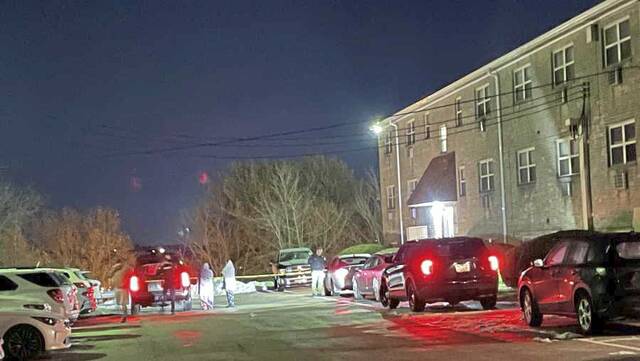While issues continue to impact Hempfield’s volunteer fire service, years of initiatives and efforts to reform the department are starting to pay off after officials received an improved rating from a national assessment company.
The review by New Jersey-based Insurance Services Office Inc., or ISO, reflects fire protection services within a community based on an evaluation of that area’s structure fire suppression capabilities. Results from that evaluation have a direct correlation with homeowners’ insurance rates.
Overall, the assessment is based on a point system analyzing emergency communications, the fire department and water supply. The number of points earned in each of those categories is used to determine where a department falls on a scale of one to 10, with one being the best.
The township in November received a score of four. That is an improvement from 2014, the last time the assessment took place, when the township received a six.
“We’ve made strides positively, moving from a six to a four,” said township fire chief Tony Kovacic. “There’s a lot of room that we can improve and we’re going to continue to work toward that. … As we are trying to improve our grade, at the end of the day what we’re getting is a better response because we’re better prepared when we do arrive.”
The assessment largely took place over the summer with ISO officials reviewing binders for each piece of equipment as well as hose, pump and ladder testing. In addition, ISO officials met with the dispatch center coordinator, community fire officials and the water superintendent, which was used in conjunction with a comprehensive questionnaire.
In all, emergency communications accounts for 10% of the overall score, the fire department accounts for 50% and water supply amounts to 40% of the score. An additional factor, divergence, also is considered. Divergence mathematically reduces the score based on the relative difference between the fire department and water supply scores.
In Hempfield, the fire department received a score of 8.9 in emergency communications, 25.18 in the fire department and 28.35 in water supply. After the divergence factor was added into the equation, the township’s overall score came out as 62.26 out of 105.5 credits available. That overall number is used to determine where a department falls on the one-10 scale.
Richard Cassidy, president and CEO of Kattan Ferretti Insurance in Greensburg and Latrobe, said homeowners’ insurance rates will likely improve because of the classification change.
“Going from a six to a four, the homeowners’ insurance premium should benefit,” Cassidy said. “It should be reduced.”
How much insurance premiums will be impacted varies by household, Cassidy said.
Michelle Pantina, spokeswoman for Verisk, which ISO is part of, said the company is “not in a position to comment on how classification change will affect local property owners.”
She noted, however, an improved protection class could lead to lower premiums for insurers using ISO information. Insurers may use different rating methods depending on the type of coverage provided and property location. Pantina suggested that property owners should consult with their insurance agent concerning possible changes.
Changes to Hempfield’s fire service
Over the past several years, changes have been made to Hempfield’s fire service in an effort to improve the ISO score while improving the fire department overall.
As part of those efforts, officials worked to consolidate the township’s 11 stations, previously operating as their own entities, under one department.
“We had to do that in order to rectify some of our problems,” Kovacic said. “If not, (the stations) would have all been graded independently and just by sheer number so it wouldn’t have boded so well.”
Under one department, stations also were required to sign service agreements, which specify training requirements, and other protocols. The township now is working to acquire stations, meaning they will incur financial obligations and equipment. So far, North Hempfield and Hempfield No. 2 have been acquired by the township.
In addition, the township’s volunteer service now operates under a paid fire chief and deputy fire chief. This month, township leaders tapped three longtime members of the volunteer fire service to serve as assistant fire chiefs. The volunteer positions are in charge of establishing command at fire and emergency scenes.
Overall, changes made to the fire service since 2014 helped to improve the latest ISO rating by raising scores in each of the three main categories.
The township’s emergency communications, which received a score of 8.9 this year, slightly improved from 2014 when it earned 8.68 credits. The assessment included scores for emergency reporting, which could get a total of three credits; telecommunicators, a total of four credits; and dispatch circuits, a total of three credits.
This year, Hempfield received maximum credit for emergency reporting, 3.95 for telecommunicators and 1.95 for dispatch circuits, which are used to transmit alarms to fire members.
In the fire department, the township received 25.18 credits out of 50. In 2014, the score was 16.51.
That portion is broken down into several individual scores for engine and ladder/service vehicles including reserve apparatus; equipment carried; response to reported structure fires; deployment analysis of companies; available and/or responding firefighters and training.
According to the assessment, the township received 4.54 out of 10 credits for deployment analysis, which examines the number and adequacy of existing engine and ladder-service companies to cover areas of the township.
The Hempfield Fire Department received 3.21 out of 15 credits for company personnel, or the average number of existing firefighters and company officers available to respond to first-alarm fires. The township is working to implement a retention and recruitment program this year to help bolster the number of firefighters in the department.
In addition, the township received 2.31 credits out of nine for training. According to Kovacic, the score is based off of 16 hours of training per month, which “is pretty tough. You’re asking volunteers to give up an entire weekend, two eight hour days of doing it. It’s not very realistic.”
Instead, Hempfield firefighters are required to complete four hours of training each month.
The township received the total credit for operational considerations, pumper capacity and ladder service. Close to full credit was received for engine companies and reserve pumpers.
In water supply, Hempfield received 28.35 credits out of 40. That’s compared to 2014 when the score received was 22.89.
During the assessment, several factors are considered including supply system, hydrants and inspection and flow testing. This year, Hempfield received 23.81 credits out of 30 for supply system; 2.94 our of three credits for hydrants and 1.60 out of seven for inspection and flow testing.
“There’s room for improvement there and we’re going to continue to work with the water authority moving forward,” Kovacic said. “Probably the biggest opportunity for us to improve is in fire because it is 50% of that value. We need to continue to move forward and do things and get folks trained.”
The national assessment typically occurs when it appears there is a possibility that the overall score has changed.








